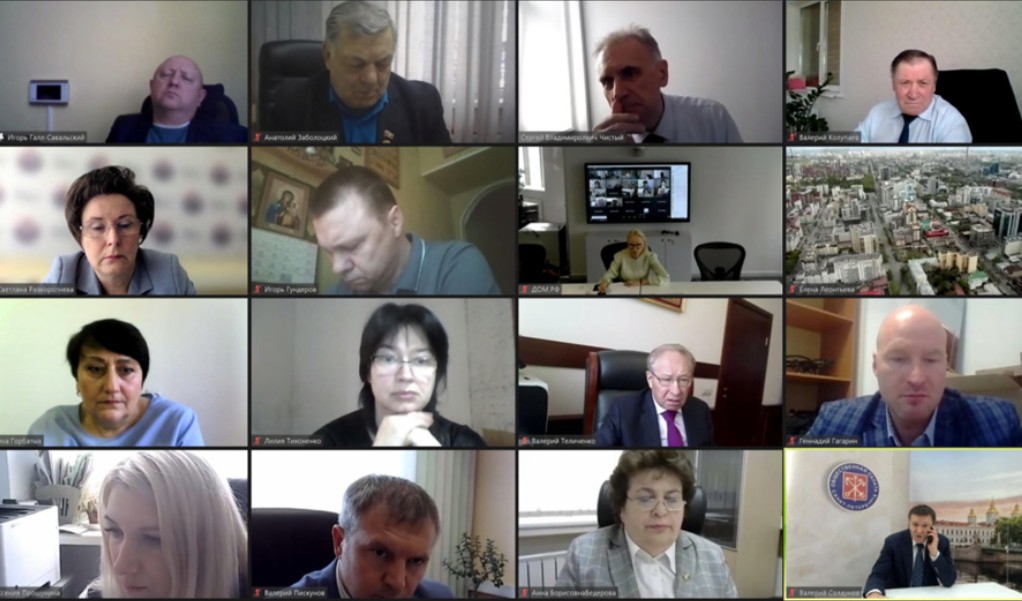Only systematic work to create an accessible environment for people with disabilities can bring results, noted Svetlana Razorotneva, Chairman of the RF Civil Service Commission, construction and roads. Regarding the replacement of elevator equipment, then without state co-financing of such works, the situation cannot be corrected - many elevators in the country have exhausted their resources, and this is the most expensive type of overhaul. 
"Unfortunately, funds, which are included in capital repair funds, sometimes not even enough to repair the planned. Even a simple lift replacement is really a disaster., not to mention the elevators, which can be used by wheelchair users. Therefore, many overhaul programs deliberately postpone these types of work to a later date - there is no money in the funds. And while the solution to this problem has not been found. Yes, the mechanism of accelerated replacement of elevators began to work in the regions, Yes, the national roadmap for overcoming the crisis includes state support for the replacement of an elevator through the Fund for Assistance to Reforming Housing and Communal Services, but it is not about co-financing these works, but about leasing mechanisms, subsidized interest rates are paltry compensation, which will not be enough for many ", - she said.
The Federal Law on Social Protection of Disabled Persons in the Russian Federation defines the powers of the state to ensure conditions for unimpeded access for people with disabilities, including wheelchair users, to objects of social and transport infrastructure, public buildings; proper placement of equipment and media, etc.. d. In practice, an accessible environment for people with limited mobility is often fraught with serious problems., including during new construction and overhaul of buildings and premises, сообщила член Комиссии ОП РФ Galina Gorbatykh.
 Today, the main guide to creating an accessible environment in institutions is the set of rules "Accessibility of buildings and structures for people with limited mobility" (SP 59.13330.2016), which often conflicts with another valid document - the set of rules "Public buildings and structures" (SP118.13330.2012). Misreadings, eg, relate to passenger lifts or hoisting devices.
Today, the main guide to creating an accessible environment in institutions is the set of rules "Accessibility of buildings and structures for people with limited mobility" (SP 59.13330.2016), which often conflicts with another valid document - the set of rules "Public buildings and structures" (SP118.13330.2012). Misreadings, eg, relate to passenger lifts or hoisting devices.
“These elevators are not only used by people with wheelchairs.. We have moms with strollers, elderly people, people with luggage. The so-called low-mobility groups of people, according to statistics, make up 40 percent of the total population. Furthermore, we see, that dynamics grows with age: in 70 percent of older people 70 years, there are functional limitations, which lead to some form of disability. therefore, when we talk about residential buildings and elevators, we have to think about a wider category of the population ", - Galina Gorbatykh explained.
She also voiced other problems of people with limited mobility.: inaccessibility of escape routes; inappropriate size of safe areas in case of emergencies; differences between the levels of sidewalks and entrance areas; inability to use outdoor lifts without assistance, or, eg, in winter, etc.. d. and t. P.
“Today we are trying to adapt all, what was built inaccessible, but at the same time we make new construction inaccessible. Can't you come to a decision, that any building above one floor should be accessible for people with limited mobility?"- a member of the OP RF is indignant.
Galina Gorbatykh paid special attention to the problems with the evacuation of people, including those with mental characteristics, in specialized institutions. In addition to having rescue equipment, this requires special training for the staff and clients of such institutions, she is convinced.
There is one normative document in the lift industry, the regulatory requirements for accessibility are the technical regulations of the Customs Union "Safety in elevators", which specifically specifies the special requirements for the accessibility of elevators, clarified the chairman of the technical committee for standardization TK-209 "Elevators, escalators, пассажирские конвейеры и подъемные платформы для инвалидов» Lev Wolf-Troop.
According to the expert, the current standard establishes all the necessary accessibility requirements, but designed primarily for new construction. Regarding the refurbishment or overhaul of elevators in old buildings, then, in his opinion, solutions exist today, allowing to increase the size of the cabin and doorway, but all these decisions must be considered individually on a case-by-case basis.
IN 2020 year, it is planned to replace over 15,5 thousands of lifts are on 11 percent less, than in 2019 year, said the General Director of the Association "Russian Elevator Association", Pyotr Kharlamov, Secretary of the Commission on Elevator Facilities under the Public Council of the Ministry of Construction of Russia. The expert recommended a number of subjects to pay more attention to the condition of the elevators: in the Ulyanovsk region the ratio of lifts, which need to be replaced, to the elevators, in operation, to 2025 year will be 71 percent (3264 elevator), in Udmurtia - 74 percent (3111 elevators), in the Yaroslavl region - 69 percent (2890 elevators), in the Samara region - 59 percent (8224 elevator). Petr Kharlamov drew attention, that work has begun on budget financing - 750 million rubles have already been allocated for replacement 1010 elevators.
“The round table raised more questions, than answers. We need to join forces with experts from public organizations, continue discussing the problem and look for solutions ", - summed up Galina Gorbatykh.
NROOI “Invatur” implements a social project “accessible Environment – freedom of movement”, supported by the Presidential Grants Fund.




